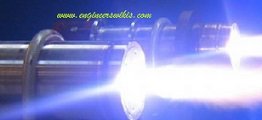plasma gasification

Plasma burners, also known as plasma torches or plasma arc torches, are devices that generate and control a high-temperature plasma flame for various applications. The plasma created by passing an electric current through a gas, typically a noble gas or a mixture of gases, which then ionizes and forms a plasma arc.
Working principle of plasma burners(plasma arc)
The working principle of plasma burners involves the generation and control of a high-temperature plasma flame. Here is a simplified explanation of the working principle:
- Gas ionization: Plasma burners typically use a noble gas, such as argon or helium, or a gas mixture as medium. The gas introduced into the burner, and an electric current passed through it. This current generated by various methods, including direct current (DC) or radio frequency (RF) power sources.
- Arc formation: When the electric current passes through the gas, it ionizes the gas atoms, creating a plasma arc or discharge. The ionization process involves the stripping of electrons from gas atoms, resulting in a mixture of positively charged ions and free electrons.
- Plasma jet formation: The ionized gas forms a highly conductive plasma channel, known as the plasma jet. This plasma jet directed through a nozzle or orifice, shaping and concentrating the plasma flame into a focused stream.
- High-temperature plasma flame: As the plasma jet exits the nozzle, it undergoes rapid expansion, causing an increase in temperature and velocity. The expansion causes the plasma flame to reach extremely high temperatures, typically ranging from several thousand to tens of thousands of degrees Celsius.
- Control and stabilization: The plasma burners incorporate various mechanisms to control and stabilize the plasma flame. These include gas flow control, electrode configuration, and power modulation. By adjusting these parameters, the plasma flame characteristics, such as temperature, shape, stability, and intensity controlled to suit specific applications.
Plasma burner(plasma arc)
Plasma burners, also known as plasma torches or plasma arc torches, are devices that generate and control a high-temperature plasma flame for various applications. The plasma created by passing an electric current through a gas, typically a noble gas or a mixture of gases, which then ionizes and forms a plasma arc.
Key features and applications of plasma burners:
- High temperatures: Plasma burners can generate extremely high temperatures ranging from several thousand to tens of thousands of degrees Celsius. This makes them suitable for applications that require intense heat, such as materials processing, surface treatment, and waste disposal.
- Versatility: Plasma burners used with different gases and gas mixtures, allowing flexibility in controlling the properties of the plasma flame. This versatility enables customization of the plasma burner for specific applications, as plasma cutting, plasma spraying, or plasma-enhanced chemical reactions.
- Efficient heat transfer: Plasma burners provide efficient heat transfer due to the high energy density of the plasma flame. The concentrated heat allows for rapid heating or melting of materials. This makes plasma burners useful in processes such as metal cutting, welding, and surface modification.
- Precise control: Plasma burners offer precise control over the plasma flame through adjustments in gas flow rates, current levels, and electrode configurations. This control enables fine-tuning of the plasma characteristics, including temperature, plasma jet shape, and stability, to suit specific application requirements.
- Material processing and treatment: Plasma burners find applications in various material processing and treatment processes. Burners used for plasma cutting of metals. Where the intense heat of the plasma flame melts and blows away the material. Plasma spraying utilizes the high-velocity plasma jet to deposit coatings onto surfaces, providing enhanced protection or improved surface properties. Plasma burners also used for surface cleaning, etching, and activation in industries such as electronics, semiconductor, and automotive.
- Scientific research: Plasma burners utilized in scientific research and development for studying plasma physics, plasma chemistry, and plasma-material interactions. They provide a controlled platform for investigating fundamental plasma properties and exploring novel applications of plasma technology.
Use of plasma burners for pelletizing
- Drying and preheating: Plasma burners used for drying and preheating the feed material before it enters the pelletizing process. Plasma burners generate high temperatures, which can quickly remove moisture from the material and raise its temperature to the desired level, ensuring optimal pellet formation.
- Binder activation: In some pelletizing processes, binders or additives used to improve the pellet’s strength and durability. Plasma burners employed to activate these binders by providing the necessary heat energy to initiate chemical reactions and promote bonding between the particles.
- Pellet induration: Plasma burners can be utilized during the induration phase of pelletizing. Induration involves subjecting the green pellets to high temperatures to sinter and solidify them into durable pellets. Plasma burners can provide the intense heat required for this process, ensuring efficient induration and achieving the desired pellet quality.
- Coating and surface modification: Plasma burners can also be employed for coating or modifying the surface properties of pellets. By directing the plasma flame onto the pellets, it is possible to apply coatings, activate surface reactions, or modify the surface chemistry, resulting in enhanced pellet characteristics such as improved resistance to moisture, abrasion, or chemical degradation.
- Energy efficiency: Plasma burners can offer energy efficiency advantages in pelletizing processes. They can provide high-temperature heat quickly, reducing the time required for drying, preheating, and induration stages. This efficiency can lead to energy savings and increased overall process productivity.
- Environmental benefits: Plasma burners can contribute to environmental sustainability in pelletizing operations. They can achieve high combustion efficiency, minimizing emissions of pollutants and greenhouse gases. Additionally, the use of plasma burners can reduce the reliance on fossil fuels by utilizing alternative energy sources, such as plasma-generated electricity or plasma torches fueled by renewable energy.
